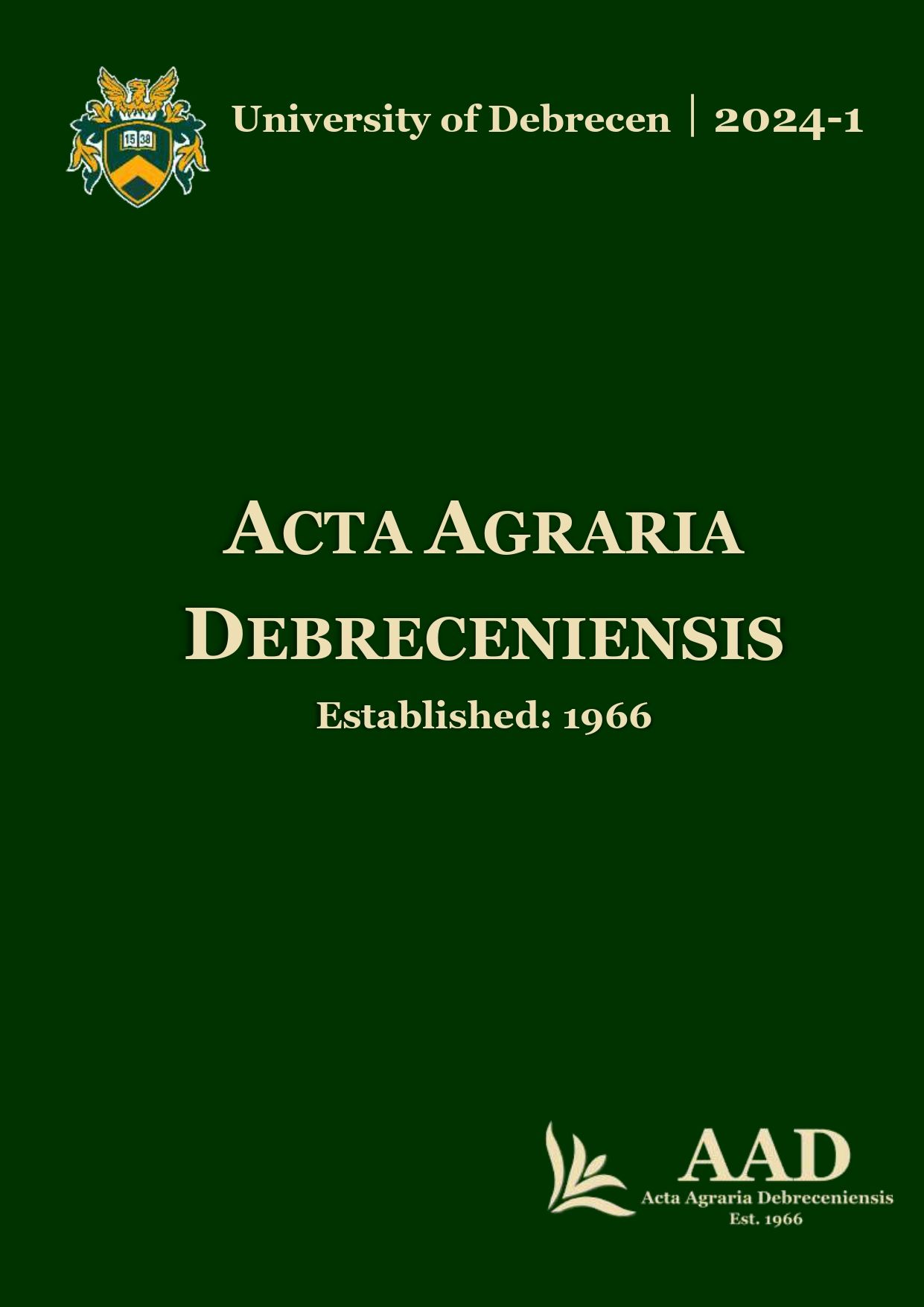Preparatory study for carbon sequestration modelling of agroforestry systems in Hungary: The assessment of the yield class distribution of windbreaks
Authors
View
Keywords
License
Copyright (c) 2024 by the Author(s)

This work is licensed under a Creative Commons Attribution 4.0 International License.
How To Cite
Accepted 2024-03-11
Published 2024-06-03
Abstract
The escalating carbon dioxide emissions leading to global climate change are acknowledged as a paramount environmental challenge in the twenty-first century. The significance of land use systems in stabilising carbon dioxide levels and enhancing carbon sink potential has gained noteworthy attention from both the scientific and political communities. The Intergovernmental Panel on Climate Change emphasises that agroforestry systems present vital prospects for synergising climate change adaptation and mitigation efforts, offering substantial technical mitigation potential. Windbreaks are well-known agroforestry systems in Hungary and form an important part of agricultural landscapes. The improved agroforestry subsidy system in our country makes it relevant to model the carbon sequestration potential of windbreaks. In the framework of the ForestLab project we plan to develop a carbon sequestration model specific for Hungarian agroforestry systems. In this study, as a preparatory step of the model development, we assessed the yield class distribution of Hungarian windbreaks by tree species group and identified variables that had significant effect on yield class based on the data of the National Forestry Database. Our results show that among the examined effects the most important predictor of the yield class of windbreaks was the tree species group, followed by the thickness of the productive soil layer and the hydrology of the site.
References
- Ábri, T.; Csajbók, J. (2023): Comparative study of newly-bred black locust clones with regard to photosynthetic rate and water use efficiency: early evaluation. Acta Agraria Debreceniensis, (1), 5–10. https://doi.org/10.34101/actaagrar/1/12256.
- Bondor, A. (1988): 25 éves a magyar szervezett, hosszú lejáratú fatermési kutatás. Erdészeti Lapok, 37 (10): 446–453.
- Borovics, A. (2022): ErdőLab: a Soproni Egyetem erdészeti és faipari projektje: Fókuszban az éghajlatváltozás mérséklése. Erdészeti Lapok, 157: 4 pp. 114–115.
- Borovics, A.; Király, É. (2023): The Challenge of Mobilizing the Unused Wood Stock Reserve to Foster a Sustainable and Prosperous Hungarian Forest Industry, Chemical Engineering Transactions, 107, 637–642. https://doi.org/10.3303/CET23107107.
- Borovics, A.; Somogyi, N.; Honfy, V.; Keserű, Zs.; Gyuricza, Cs. (2017): Agrárerdészet, a klímatudatos, természetközeli termelési mód. Erdészeti Lapok 6: 178–182.
- Borovics, A.; Király, É. (2023): Klímamitigáció és alkalmazkodás a magyar erdőiparban. Erdészeti Lapok, 158: 1 pp. 5–9.
- Borovics, A.; Király, É. (2022): Az erdőgazdálkodás szerepe a klímavédelemben az IPCC értékelő jelentése szerint. Erdészeti Lapok, 157: 7–8 pp. 265–268.
- Fernández-Núñez, E; Rigueiro-Rodríguez, A.; Mosquera-Losadaa, M.R. (2010): Carbon allocation dynamics one decade after afforestation with Pinus radiata D. Don and Betula alba L. under two stand densities in NW Spain. Ecol Eng, 36:876–890. https://doi.org/10.1016/j.ecoleng.2010.03.007.
- Honfy, V.; Pödör, Z.; Keserű, Z.; Rásó, J.; Ábri, T.; Borovics, A. (2023): The Effect of Tree Spacing on Yields of Alley Cropping Systems—A Case Study from Hungary. Plants, 12, 595. https://doi.org/10.3390/plants12030595.
- IPCC (2022): AR6 WG3 Chapter 7: Agriculture, Forestry and Other Land Uses (AFOLU) Nabuurs G-J., Mrabet R., Abu Hatab A., Bustamante M., Clark H., Havlík P., House J., Mbow C., Ninan K.N., Popp A., Roe S., Sohngen B., Towprayoon S.; https://report.ipcc.ch/ar6wg3/pdf/IPCC_AR6_WGIII_FinalDraft_Chapter7.pdf; doi=10.1017/9781009157926.009
- Király, É.; Börcsök, Z.; Kocsis, Z.; Németh, G.; Polgár, A.; Borovics, A. (2022): Carbon Sequestration in Harvested Wood Products in Hungary an Estimation Based on the IPCC 2019 Refinement. Forests 13, 1809. https://doi.org/10.3390/f13111809.
- Király, É.; Keserű, Z.; Molnár, T.; Szabó, O.; Borovics, A. (2024): Carbon Sequestration in the Aboveground Living Biomass of Windbreaks—Climate Change Mitigation by Means of Agroforestry in Hungary. Forests, 15, 63. https://doi.org/10.3390/f15010063.
- Kottek, P.; Király, É.; Mertl, T.; Borovics, A. (2023): The Re-parametrization of the DAS Model Based on 2016–2021 Data of the National Forestry Database: New Results on Cutting Age Distributions. Acta Silv. Lignaria Hung. 19, 61–74. https://doi.org/10.37045/aslh-2023-0005.
- Lal, R (2010): Managing soils and ecosystems for mitigating anthropogenic carbon emissions and advancing global food security. Bioscience, 60:708–721. https://doi.org/10.1525/bio.2010.60.9.8.
- Nair, P.K.R. (2011): Methodological Challenges in Estimating Carbon Sequestration Potential of Agroforestry Systems. In: B.M. Kumar and P.K.R. Nair (eds.), Carbon Sequestration Potential of Agroforestry Systems: Opportunities and Challenges, Advances in Agroforestry, 8, Springer Science+Business Media B.V. https://doi.org/10.1007/978-94-007-1630-8_1.
- Nair, P.K.R.; Nair, V.D.; Kumar, B.M.; Showalter, J.M. (2010): Carbon sequestration in agroforestry systems. Adv Agron, 108:237–307. https://doi.org/10.1016/S0065-2113(10)08005-3.
- NAK (2022): Fától az Erdőig—új Támogatási Lehetőségek. National Chamber of Agriculture. Available online: https://www.nak.hu/tajekoztatasi-szolgaltatas/erdogazdalkodas/104858-fatol-az-erdoig-uj-tamogatasi-lehetosegek.
- NIR (2023): Chapter: Land-Use, Land-Use Change and Forestry. In National Inventory Report for 1985–2021; Somogyi, Z., Tobisch, T., Király, É., Eds.; Hungarian Meteorological Service: Budapest, Hungary.
- Peszlen, R.J. (2015): Statikus fatermési modellek kialakulása és fejlődése [Emergence and Evolution of the Static Forest Crop Models]. In: Tanulmánykötet Mészáros Károly tiszteletére 2015. Nyugat-magyarországi Egyetem Kiadó, Sopron, pp. 5–14. ISBN 978-963-334-242-8.
- Szmorad, F.; Tímár, G. (2014): Az akáckérdésről – tényszerűen. [Facts about the black locust issue]. Erdészeti Lapok, 149, 114–117.
- Tobisch, T.; Kottek, P. (2013): Forestry-Related Databases of the Hungarian Forestry Directorate, Version 1.1; NFCSO: Budapest, Hungary.
- UNFCCC (2006): Revised simplified baseline and monitoring methodologies for selected small-scale afforestation and reforestation project activities under the clean development mechanism. Bonn. Available at http://cdm.unfccc.int/UserManagement/FileStorage/CDMWF_AM_A3II6AX6KGW5GBB7M6AI98UD3W59X4. Accessed 15 January 2024.
- UNFCCC (2007): Report of the conference of parties on its thirteenth session, Bali, Indonesia. United nations framework convention on climate change, Geneva
- Verkerk, P.J.; Delacote, P.; Hurmekoski, E.; Kunttu, J.; Matthews, R.; Mäkipää, R.; Mosley, F.; Perugini, L.; Reyer, C.P.O.; Roe, S.; Trømborg, E. (2022): Forest-based climate change mitigation and adaptation in Europe. From Science to Policy 14. European Forest Institute, ISBN: 978-952-7426-22-7 – https://doi.org/10.36333/fs14.

 https://doi.org/10.34101/actaagrar/1/13673
https://doi.org/10.34101/actaagrar/1/13673